Choosing the right studio monitors can be time consuming. A lot of technical terms and marketing phrases are thrown around that can make the decision difficult, specially for a beginning audio professionals with little experience in recording studio monitors. The most important thing to consider is the studio monitor’s ability to produce a “flat” sound which accurately represents the recording. To help you narrow down the list, we have compiled the top 10 studio monitors.
1. Yamaha NS-10
The Yamaha NS-10 has had a long and prolific history in the audio engineering industry. It was the first true studio monitor and almost every studio in the 90s was rocking the Yamaha NS-10. The NS-10 was so highly regarded it even won a technical Grammy.
However, it is quite old and no longer manufactured, you can find them second hand on eBay and other places. They are still able to be used effectively in a studio nowadays, but like hot-rods they are usually for enthusiasts and dedicated audiophiles. They shaped the music industry and for over 20 years still continue to be a benchmark of recording studio monitors.
2. KRK Rokit 8
The KRK Rokit 8 is latest version of the very popular Rokit series. Instantly recognizable with its yellow woofer, the KRK Rokit is the new-age standard for studio monitors. Perfect for electronic dance music and acoustic productions, you can’t go wrong with the Rokit series.
3. Adam A7X Monitors
The Adam A7X is the updated version of the popular Adam A7 model. The Adam A7X comes in a sleek and sexy box and utilizes the latest audio technology to keep your audio sounding nice and crisp even at high volumes. They are a good choice for mixing and extended listening.
4. Mackie HR824 MK2
Mackie are a reputable brand when it comes to audio equipment. The HR824 MK2 is capable of deep and accurate bass making it a popular choice for electronic music producers. They are quite big, so you’ll need to have a large studio space to be able to fit these monitors.
5. Genelec 8030
The Genelec is a small monitor that produces sound you wouldn’t think is possible for something so small. Despite its small size it can keep crisp audio at high volumes and produces very accurate sound across all frequencies. The perfect choice for small studios when you have limited space to fit all your equipment.
6. JBL LSR 2325P
JBL has been in the loudspeaker industry for a long time and they know how to create great audio equipment while still being affordable. The JBL LSR series is a great range to look at when considering studio monitors. LSR stands for Linear Spatial Reference, this technology takes your room shape and size into account to produce the most accurate sound possible.
7. Tannoy Reveal 501A
Another great pair of studio monitors that comes highly recommended by music professionals and audio engineers. They are the latest in the popular Tannoy Reveal series, and continue the tradition of affordable high quality sound.
8. M-Audio Studiophile BS5 D2
M-Audio are famous for their music production equipment, but they also make some great speakers. The M-Audio Studiophile monitor series are loved and trusted by musicians and recording professionals all over the world. There is a reason that the Studiophile series is one of the best selling monitor studios in the world. M-Audio is a trusted brand and you won’t regret purchasing a set of Studiophile speakers.
9. Behringer Truth B1031A
The Behringer B1031A is a great starting pair of studio monitors. They are quite cheap compared to the other options and offer sound quality that is very close to the best. Featuring a yellow woofer similar to the Rokit series, they look great and sound fantastic.
10. Yamaha HS80m
The Yamaha HS80m studio monitor is the successor to the NS10, and tries to replicate the philosophy behind the NS line. Featuring the same iconic white woofer cones as the NS10, the Yamaha HS80m produces an accurate and pleasant sound. Consistent and smooth audio make the Yamaha HS80m a no-brainer when it comes to deciding which studio monitors to buy.
If you’re in the market for a good set of studio monitors, this list is a great starting point. If you have something interesting to add, make sure to write some comments below. Finding the perfect pair of studio monitors requires a lot of trial and error. At the end of the day, it all comes down to your budget and personal preference.

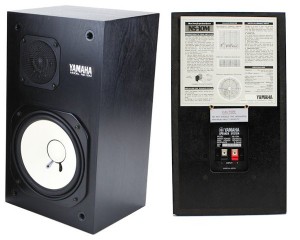
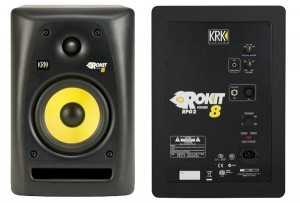
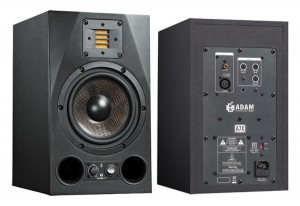
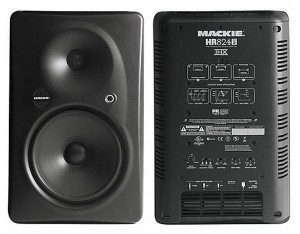
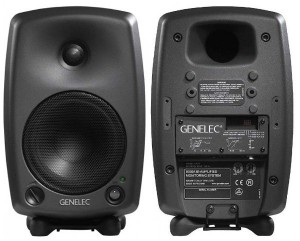
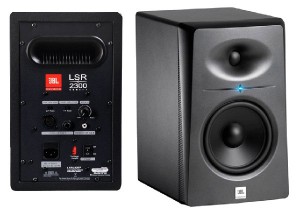
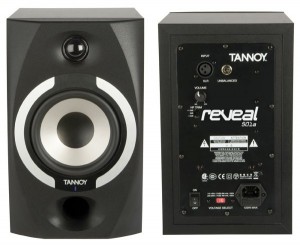
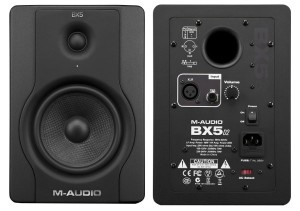
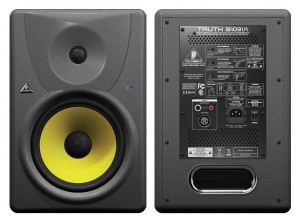
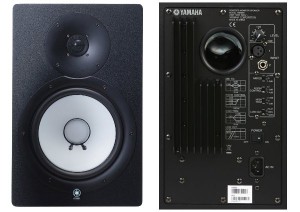

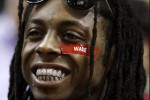

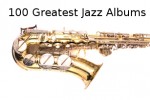
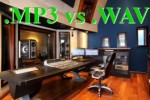
Okay so you post ‘bork’s reply calling me a pretentious [removed] but you won’t post my replies to his moronic rant? Kiss [removed] and go [removed] yourselves. I never again will visit your pretetious website.
There is absolutely no way anyone will ever convince me that a common coned speaker will suffice for studio monitoring purposes. Even plane electrostatic systems have their drawbacks, but they have far less THD than coned speakers (typically less than .25% vs 10%). And while you’re at it, use only tube or MOSFET amplifiers. The slew rate in MOSFET amplifiers is very close to that of tubes so that piano key strike almost sounds like a real piano in the room. By the way slew rate is the primary point of THD insertion in coned speakers because that cone flexes substantially upon attempting to reproduce that aforementioned piano key strike. Those of us with discerning ears can hear the difference!
And the award for pretentious audiophile [removed] of the year goes to…
There is nothing pretentious about me, Bork. Unlike yourself, I have the technical and audio experience to back up what I say else I say nothing just as you have done. Notice I have even used my real name and not a hack as you have done.
…and while we’re at it, why not call yourself Bore or Bort (short for [removed])? Thank you for the ‘audiophile’ label, BTW. Else bring real and technical data to the game instead of spewing nonsense and bile.
I had an steinberg audio interface CI1 and uses a condenser mike but connect to a pair of hifi AR Speaker. I got the sound but barely got a boosting effect from these speakers. Someone told me that hifi system speakers are not recommended for an audio interface connection and definitely not for amplifying through an interface for acoustic equipment. Is that true and that must I get an amplified monitor? Thanks.
I use a pair of Eclispe TD508 mk 3 with a Bowers & Wilkins PV1 D Subwoofer
this setup is great for my recording studio and general Hifi use
Also good are the Yamaha HS50m, the baby brother of the HS80m. Perfect for working in smaller production environments and bedroom studios, and also as rear speakers in a 5.1 setup.